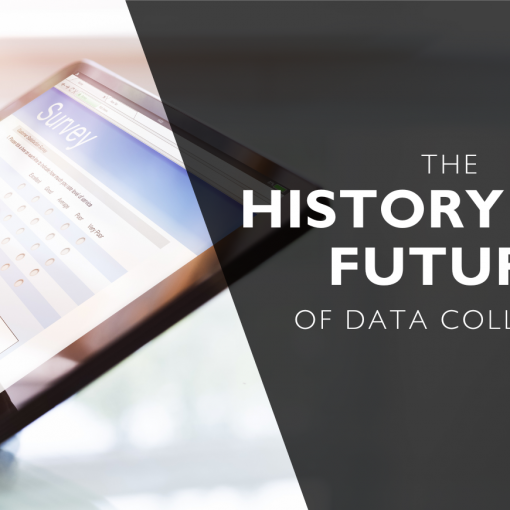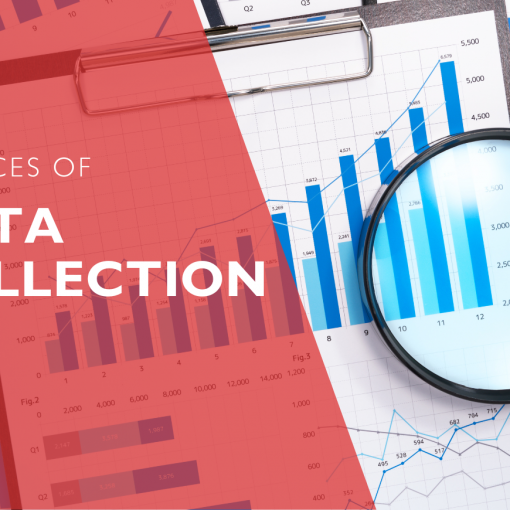Throughout my decades of experience in the market research industry, I’ve seen firsthand what primary research benefits can bring to companies. From first-hand knowledge of consumer thoughts, it can directly impact the bottom line. And as the industry evolves so quickly, I want to discuss in this article:
- An overview of what primary research is
- The key benefits
- Potential drawbacks to be aware of
- How it has evolved over time
- What triggers companies to initiate primary research
- The ongoing importance
What is Primary Market Research?
Primary market research involves gathering new data directly from target audiences. It’s conducted directly with consumers, prospects, or business buyers through methods like:
- surveys
- focus groups
- interviews
- observation
Primary research is a way to ask questions that can’t be answered through secondary sources like reports or data that already exists.
For example, companies use primary research when they are planning to create a new product and want direct customer feedback before launch. It’s critical to understand how target audiences will react to something new that they can’t find current data on. Primary research reduces assumptions and risk when launching new products, positioning brands, defining messaging, or evaluating concepts. It provides a deeper understanding directly from the source versus relying on secondhand data.
Some examples of when primary research is necessary include:
- Testing a new product concept or prototype
- Evaluating the packaging or messaging for a new product
- Understanding perceptions, usage, and preferences for an existing brand
- Testing advertising concepts or creative executions before broad launch
- Exploring customer satisfaction with current products or services
- Identifying unmet needs to uncover new product opportunities
Key Primary Market Research Benefits
Primary research reaches your actual target audience through recruiting and screening. It also allows asking specific questions tailored to the objectives rather than being restricted to what’s already available. The benefit of primary research is the ability to gather new data you define to make decisions with less uncertainty.
There are many potential benefits primary market research offers compared to only examining secondary sources and assumptions:
Reduced Risk
One of the biggest advantages of primary research is reducing risk, particularly when investing in new products or innovation. By gathering firsthand data directly from the target audience, it lowers the chance of failure and wasted resources on ideas that won’t resonate in the real world. Having a more precise read on customer needs and feedback on new concepts means you can refine them prior to investing in development and launch.
Uncover Insights You Would Miss Otherwise
Primary research benefits through quantitative and qualitative methods can uncover insights that are hard to find in secondary sources. For example, watching users interact with products often reveals usability issues and needs. Opinions often change when people discuss and debate ideas in a group. Asking open-ended questions provides deeper perspective. Primary research provides richer, nuanced insights you can’t get from existing sources.
Target Relevant Segments
Unlike secondary research or social media listening, you can target primary research to exactly the audience segments you want to reach. You can screen for demographics, behaviors, attitudes, usage, etc. This ensures you are hearing from people who matter most for decisions and removes noise from consumers outside your targets.
Answer Specific Questions
With primary research, you define the exact questions you want answered. This flexibility means you can tailor the research design and methodology specifically to the unknowns and business decisions that need illumination. The output provides insights needed on priorities rather than only having access to generic secondary data.
Up-to-Date Perspective
Markets, consumer preferences, competitive forces, and technology are constantly evolving. This means secondary research can quickly become out of date. Primary research gathers current data in the moment it’s needed to account for changes since previous data was collected. This real-time perspective provides confidence you are making decisions based on the present rather than outdated snapshots of the past.
Quantify Opportunities
Primary market research can quantify opportunities to demonstrate size, demand, and potential revenue opportunities. Understanding volume and scale can justify investments and provide estimates to build business cases. Quantifiable data also lends credibility compared to qualitative opinions that are open to interpretation.
Informs Strategy & Tactics
Beyond broader opportunity identification, primary research benefits include insights to shape specific elements of strategy and tactics. Feedback on concepts can refine messaging, positioning, and segmentation. Competitive research can reveal specific vulnerabilities and opportunities. Pricing studies provide data for targeting and tiering. Needs assessment uncovers the features or enhancements customers value most. Primary research informs all elements of strategic programs and go-to-market plans beyond high-level opportunity assessment.
Ongoing Monitoring
Ongoing primary research also serves as an early warning system to detect changes that require course correction. Regular customer satisfaction tracking spots emerging problems before they escalate and become crises. Sales can identify obstacles slowing purchases that marketing must address. It becomes your ear to the ground beyond relying on internal assumptions of what customers want and need.
Potential Drawbacks & Limitations
While primary research benefits are undeniable, there are some limitations and potential drawbacks to be aware of including:
Higher Costs
Compared to only using free secondary sources, primary research requires more budget to design studies and collect robust data.
Time Investment
Primary research takes lead time to design, field, and analyze. Compressing research timelines risks flawed designs and unreliable findings.
Not a Replacement for Secondary Research
While extremely valuable, primary research should complement and build on existing knowledge, not replace secondary research altogether. Secondary research sets context and provides benchmarks ahead of primary data collection. It can answer some questions at lower costs to inform where primary research is needed most.
Potential sampling bias
Unlike census data, primary research represents a sample of the target market. Even with careful sampling and controls, some bias is possible that distorts findings and limits the ability to project reliably across entire populations. Primary research alone may miss pockets of opportunity only detectable through big data analytics.
Difficulty Reaching Some Audiences
While primary research allows targeting your core customers and prospects, some segments are harder to reach than others. Rare disease patients, high-net-worth individuals, or C-level executives are examples of groups that may warrant primary insights but are costly and challenging to access in representative numbers. For broad business decisions, primary research often requires prioritizing easier-to-reach mainstream segments.
The Evolution of Primary Market Research
The origins of more formalized primary market research trace back to the 1920s and 1930s as companies looked for more systematic ways to understand consumers rather than relying on intuition and anecdotal data. Over the years, the ways primary research is done have changed and technology certainly has opened up the possibilities to reach consumers anywhere.
Until more recently, for most of its history, primary research was conducted through in-person, phone, and mail surveys. But the digital age has unlocked new possibilities over the more recent past:
- Online panels provide access to millions of potential respondents globally who can be screened, sampled, and surveyed quickly through digital questionnaires.
- Virtual focus groups and interviews allow convenient recruitment and discussions using webcams or smartphone video.
- Mobile survey apps enable in-the-moment feedback through brief surveys pushed to smartphones.
- Passive data collection through mobile apps, meters, observation, and diaries captures real-world behaviors.
- Integrated analytics combine primary research with behavioral and transactional data for complete understanding.
- Big data in general has had an impact.
The future of primary research blends synchronous human engagement using technology like video with asynchronous data and insight capture in the flow of customers’ natural environments. Rapid analysis and visualization make insights immediately actionable.
What Triggers the Need for Primary Research?
Many companies conduct primary research at some point, but what circumstances prompt the need? The most common triggers include:
New Product Development
The number one trigger for primary research is developing something new that lacks current secondary data – like an innovative product or untested concept. Primary research validates customer needs, reactions, purchase intent, optimal features, pricing sensitivity, and demand forecasting. This data-driven input reduces the risks and unknowns companies face when launching into white space.
Brand Positioning
Primary research aids positioning brands through identifying unmet needs, quantifying category perceptions, benchmarking against competitors, and evaluating brand personality. Brand tracking research then monitors performance on attributes that drive brand affinity and choice.
Advertising Testing
Primary research is used to identify the most motivating messaging and bring ad concepts to life. It’s also leveraged to evaluate communication effectiveness through recall, persuasion, and likability scores to improve campaigns over time.
Customer & Market Segmentation
Combining attitudinal, behavioral, and demographic data from primary research helps with segmentation from user types to buyer stages and persona development. Identifying the needs of unique segments informs positioning, messaging, products, and experiences for targeting.
New Market Entry
When entering new segments or geographies, primary research sizes the opportunity, reveals how to localize positioning/products, profiles early adopter segments, and evaluates partnership/distribution options for go-to-market strategies.
Pricing Studies
Primary quantitative research determines price sensitivity, elasticity, and optimization scenarios. Pricing studies define thresholds, compare pricing models, segment by willingness-to-pay, and identify opportunities for premiumization or discounting.
Customer Experience
Ongoing primary research identifies experience gaps and priorities while also tracking key performance metrics like satisfaction, NPS, and brand trust. Competitive benchmarking reveals strengths, weaknesses, vulnerabilities, and points of differentiation.
Competitive Intelligence
Primary research provides the competitor insights secondary data often misses for rounding out perspectives and battle cards. It assesses brand perceptions, explores strategic assumptions, and evaluates strengths/weaknesses on emotional dimensions beyond functional claims.
Beyond these common triggers, primary research can provide invaluable human-centered insights for innovation, forecasting, public policy issues, and strategic planning. It serves both defensive purposes of identifying risks and opportunities while also fueling offensive strategies and game-changing innovation.
The Emergence of DIY tools
Easy online survey tools from SurveyMonkey to Qualtrics allow practically anyone to field basic surveys with ease. But there are risks relying on DIY tools without a research foundation – including the lack of strategic consultation. Garbage in, garbage out, so to speak.
While leveraging technology and integration, the classic principles of quality insights remain timeless. Well-designed, rigorous primary research – targeted and timely – is still the gold standard for decision-making versus hunches and assumptions.
The Ongoing Importance of Primary Research
In our era of data proliferation, primary research stands out for illuminating the context behind the numbers and bringing the voice of the customer to life through direct engagement. It will only grow in importance as a way to cut through the noise with relevant insights you can uniquely own tailored to business decisions and innovation.
However, primary research requires upfront strategic investment and patience to allow for thoughtful design, fielding, analysis, and consultation to drive recommendations. There are no shortcuts if you want reliable insights to make high-confidence decisions and avoid expensive mistakes.
My advice to companies is to pick your spots wisely for primary research aligned to growth opportunities, allocate budget to do it right, and enlist experienced researchers as guides – but fully take advantage of new technologies and data integration to move faster and smarter. Additional tips when approaching primary research include:
- Seek a balance of both qualitative and quantitative research tailored to the objectives
- Leverage initial secondary research and analytics to determine priorities for primary data needs
- Build in preparation time for thoughtful questionnaire design and pretesting
- Remain flexible and open to what the data reveals versus preconceived notions
- Debrief results collaboratively across functions to drive alignment on implications and actions
When primary market research is done well it remains an invaluable tool in planning successful strategies, making smart investments, and creating products consumers value. It provides the human insight and voice of the customer to complement analytics.




